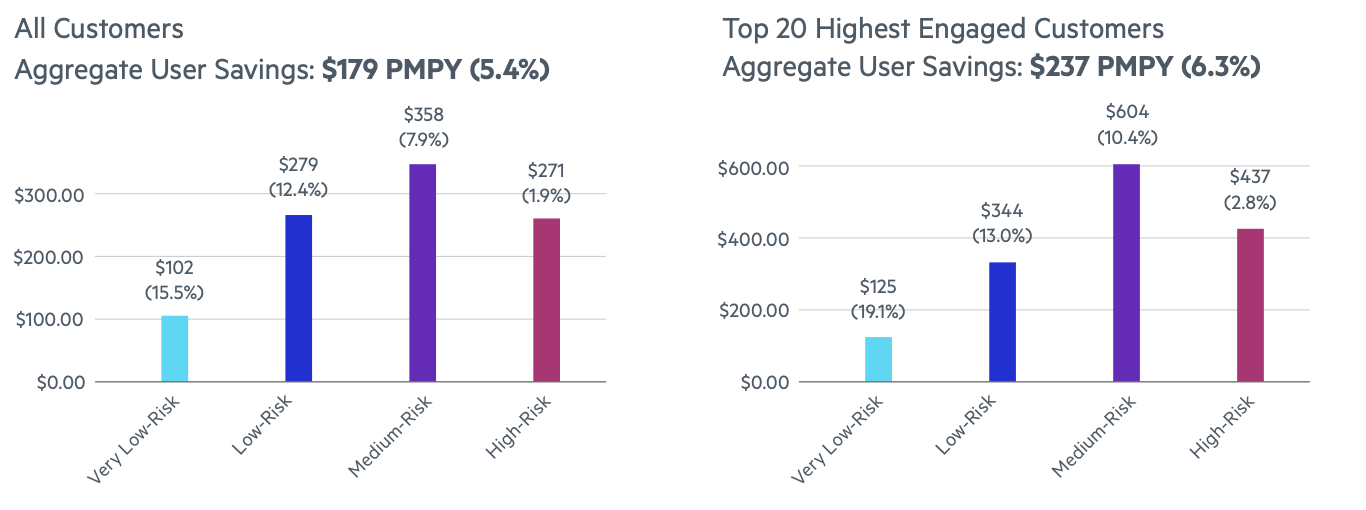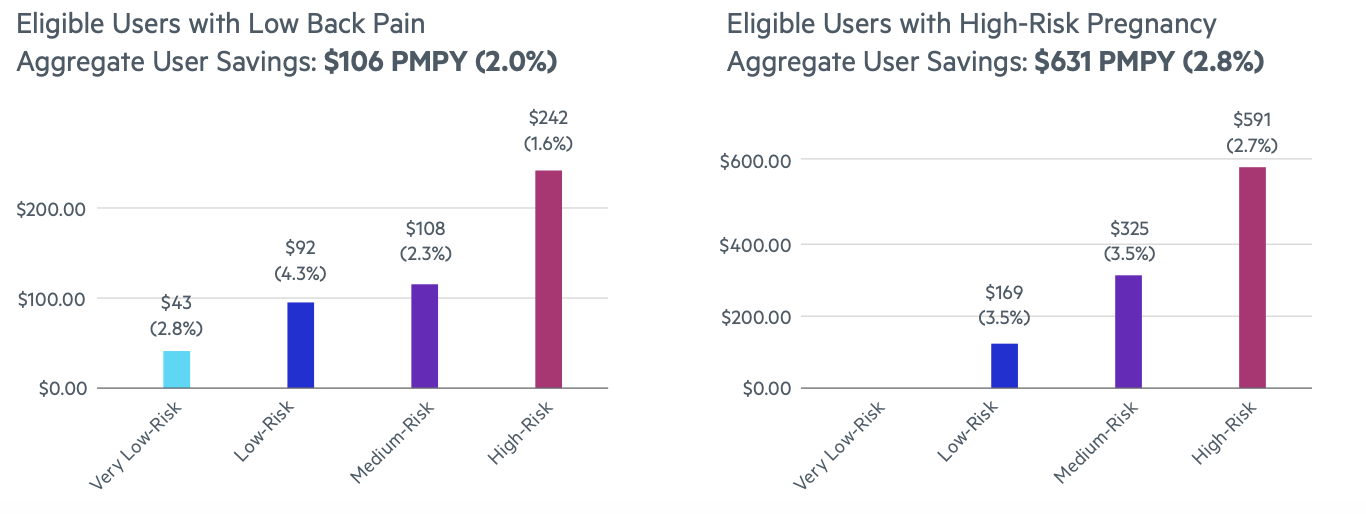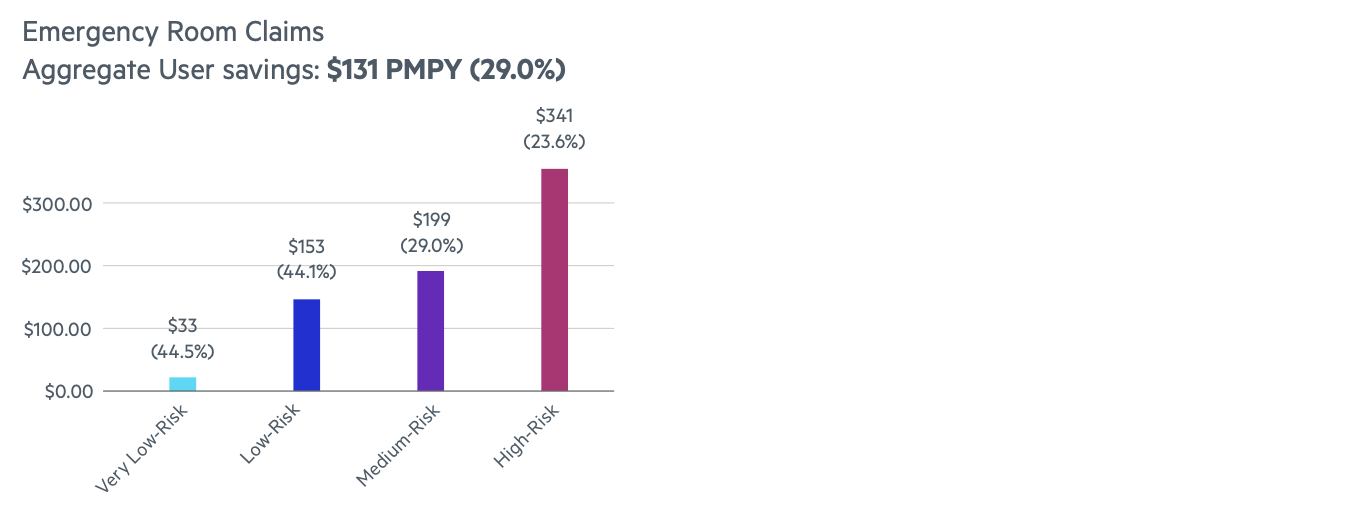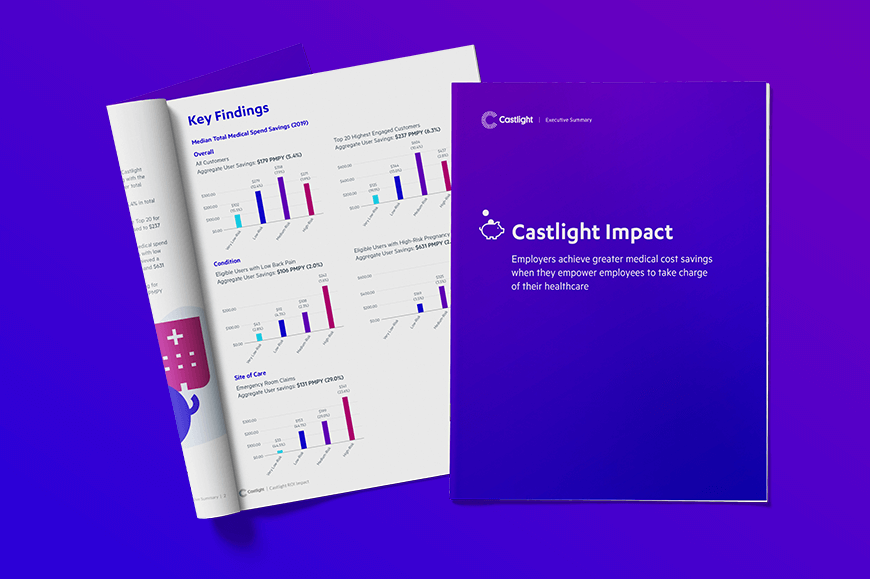
Cost savings achieved by empowering employees to take charge of their health
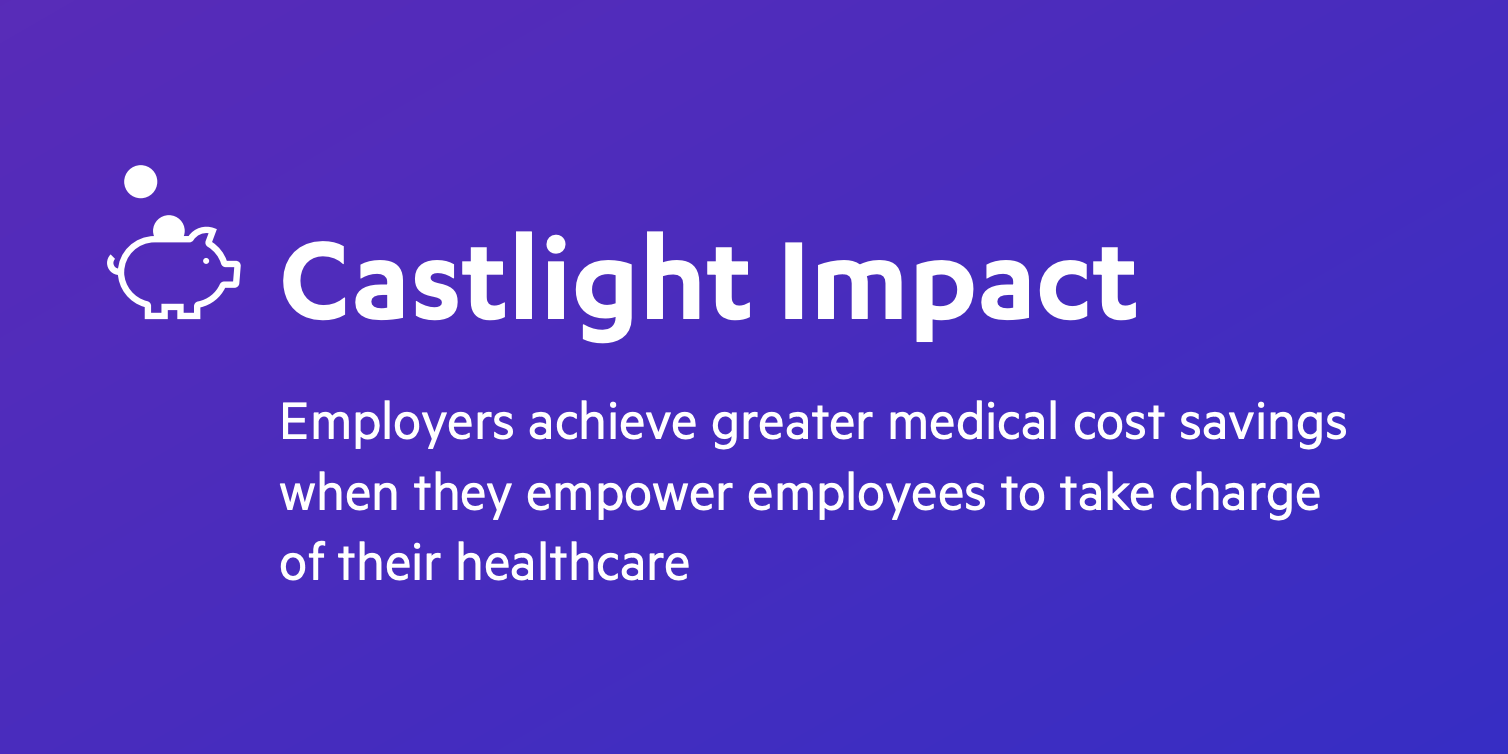
Click here to download the report
Executive Summary
In 2019, healthcare spend in the United States was $3.8 trillion, an increase of 4.4 percent from 2018. The majority of this increase can be attributed to overuse of healthcare services and escalating cost of services. While projections from the National Health Expenditures data beginning in 2020 were expected to increase by an average of 5.7 percent, the impact of the COVID-19 pandemic on overall healthcare costs will result in higher than average estimates. PWC’s latest study on medical cost projections for 2021 reports that medical costs could reach as high as 10 percent.
The health and wellbeing of the workforce is now a top priority. Employers are actively using care navigation platforms like Castlight Complete to provide personalized healthcare guidance and resources to help employees make informed decisions that result in quality care options, an overall better user experience, and, importantly, medical spend savings.
In our latest report, we analyzed the impact of Castlight on total medical spend for employees, spouses, and dependents.
But what cost savings are Castlight customers realizing?
Summary Results
In 2019, compared to non-users within Castlight customers’ populations, users engaging with the Castlight platform had significantly lower total medical spend, including:
- Overall: Reduction of $179 PMPY or 5.4% in total medical spend
- Highly Engaged: For customers in the Top 20 for user engagement, user savings increased to $237 PMPY or 6.3%
- High-Risk Conditions: Reduction in medical spend for sub-populations, including patients with low back pain and high-risk pregnancy, achieved a total cost saving of $106 PMPY (2.0%) and $631 PMPY (2.8%), respectively
- Site of Care: Total medical spend saving for emergency room visits resulted in $131 PMPY (29.0%)
Key Findings
Median Total Medical Spend Savings (2019)
Overall
Condition
Site of Care
Methodology
This analysis was based on medical claims, demographics, clinical diagnoses, and product utilization of Castlight users from 76 included customers. To be included in this analysis, customers must have launched at least six months prior to the end of the measurement period, be an active customer, and have at least 2,500 members eligible for Castlight Care Guidance product features. All data and medical claims were anonymized and normalized across all customers.
DxCG
The risk adjustment software used in this analysis is DxCG Intelligence, powered by Cotiviti. DxCG Intelligence uses Cotiviti’s predictive models to calculate a patient’s individual health and financial risk. Aggregating the scores of individuals with key attributes generates group-level predictive results that can help answer critical questions about healthcare costs, utilization, and quality. DxCG enables comparisons across diverse member groups, and the models are used by governments, payers, and provider groups. Cotiviti has been honored to advance the science of risk scoring by working with the Society of Actuaries (SOA) over the past two decades. The DxCG model was a top performer in the most recent SOA independent review.
